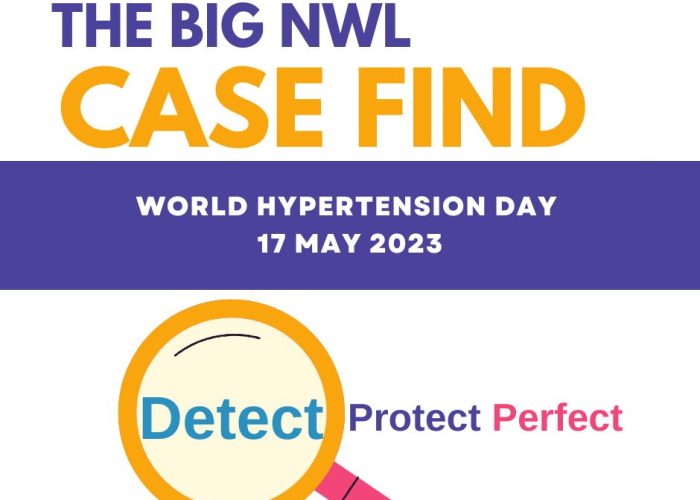Andi Orlowski , Deputy Director of Business Intelligence, explains how his team’s existing work on case finding – the last step in population health management analysis – can help support individualised patient treatment today.
, Deputy Director of Business Intelligence, explains how his team’s existing work on case finding – the last step in population health management analysis – can help support individualised patient treatment today.
GPs have been able to case find at practice level for a long time, and great tools like PRIMIS’s GRASP AF and the eligibility criteria for flu allows primary care to identify people in which to intervene, but having this information at system level and moving beyond just the clinical pathway, addressing the wider determinants of health, changes everything.
Case finding has already been successful at system level, helping provide inexpensive and effective high value care for the population. Staten Island in the United States has used case finding to great effect and we could do the same in North West London and ICSs across the country.
The authorities in Staten Island recently identified 18 population health initiatives to provide cost-effective interventions for individuals with health risks. One of these successful initiatives is the Asthma Home Visits Program, set up to reduce multiple hospital admissions for asthma. It is known that asthma triggers can be found in the home, so case finding was employed to identify those at risk who would benefit from the Asthma Home Visits Program.
Inexpensive and effective
Over 103 families have benefitted from this programme since 2016, with the introduction of simple interventions such as purchasing vacuum cleaners, providing mattress covers and making referrals to pest control services. These interventions address the family’s social, not medical, circumstances, but they have had a profound effect on reducing hospital admissions. Addressing the wider determinants of health has been an inexpensive and effective means of providing great value care for the population.
System level case finding tools
At ICHP we have developed system level case finding tools aligned to the NWL health priorities. We are focussing on atrial fibrillation (AF), chronic obstructive pulmonary disease (COPD), falls and the flu – four of the priorities in NWL.
The flu case finder targets individuals in the population at greatest risk of flu. Through this tool, we can identify those eligible for the flu jab who have not yet taken it. The big benefit is that healthcare authorities and the wider system will better understand vaccine uptake and be able to develop targeted programmes to increase uptake of the flu jab. We hope to roll out our flu dashboard soon, which will mean the correct intervention – in this case the flu jab – will be given to those most in need and most receptive, at the right time.
We have a case finding tool to identify patients with atrial fibrillation (AF) in need of anticoagulant treatment and will be soon developing a tool to identify at-risk patients amenable to intervention with chronic obstructive pulmonary disease (COPD), once appropriate resources and interventions are identified.
We also plan to look at frailty in the population and those at risk of falls for whom relatively simple, high value interventions can be introduced. For example, fitting inexpensive grab rails in the home, medicine use reviews and vision assessments could prevent falls and reduce the need for expensive hip surgeries.
This goes beyond just the clinical pathway
Case finding enables us to drill down to the individual level and find the members of the population at risk of certain outcomes, amenable to or with an appropriate opportunity for intervention. This goes beyond just the clinical pathway; with the right data you can address the wider and social determinates of health too.
The business intelligence team at ICHP is lucky to have access to one of the best integrated linked datasets in England (if not Europe) called WSIC. This data set covers the population in North West London (NWL) and is fed by data from over 400 provider organisations including ~360 GP practices, two mental health trusts, two community trusts, social care and all the acute providers within the North West London region.
The data will also be accessed by Discover-NOW, one of seven pioneering UK data hubs set up to enable cutting-edge research and innovation, launched in September. Through secure access to WSIC, Discover-NOW will be able to look prospectively to identify new patterns in disease. Using case finding on Discover-Now’s near real time data in a research capacity will help better manage many conditions and, in some cases, prevent them happening in the first place.
Part of the reason system level case finding is not used everywhere in England is access to data, few places have access to a linked and integrated primary and secondary care data set for the purposes of planning or direct care and even fewer have that data linked to data on wider and social determinants.
Huge opportunity to make a real difference to the health outcomes of our population
This isn’t the case in NWL, we have an amazing data set in WSIC, we can use it to do so much and we have a huge opportunity to make a real difference to the health outcomes of our population. We can personalise treatment plans, identify the very best care and those at risk of negative outcomes. We can allocate resources more efficiently for bigger gains at a system level and deliver value where it’s needed most. That is the power of case finding.
To find out more, please contact Andi Orlowski
To read more about this work, please see the links below:



